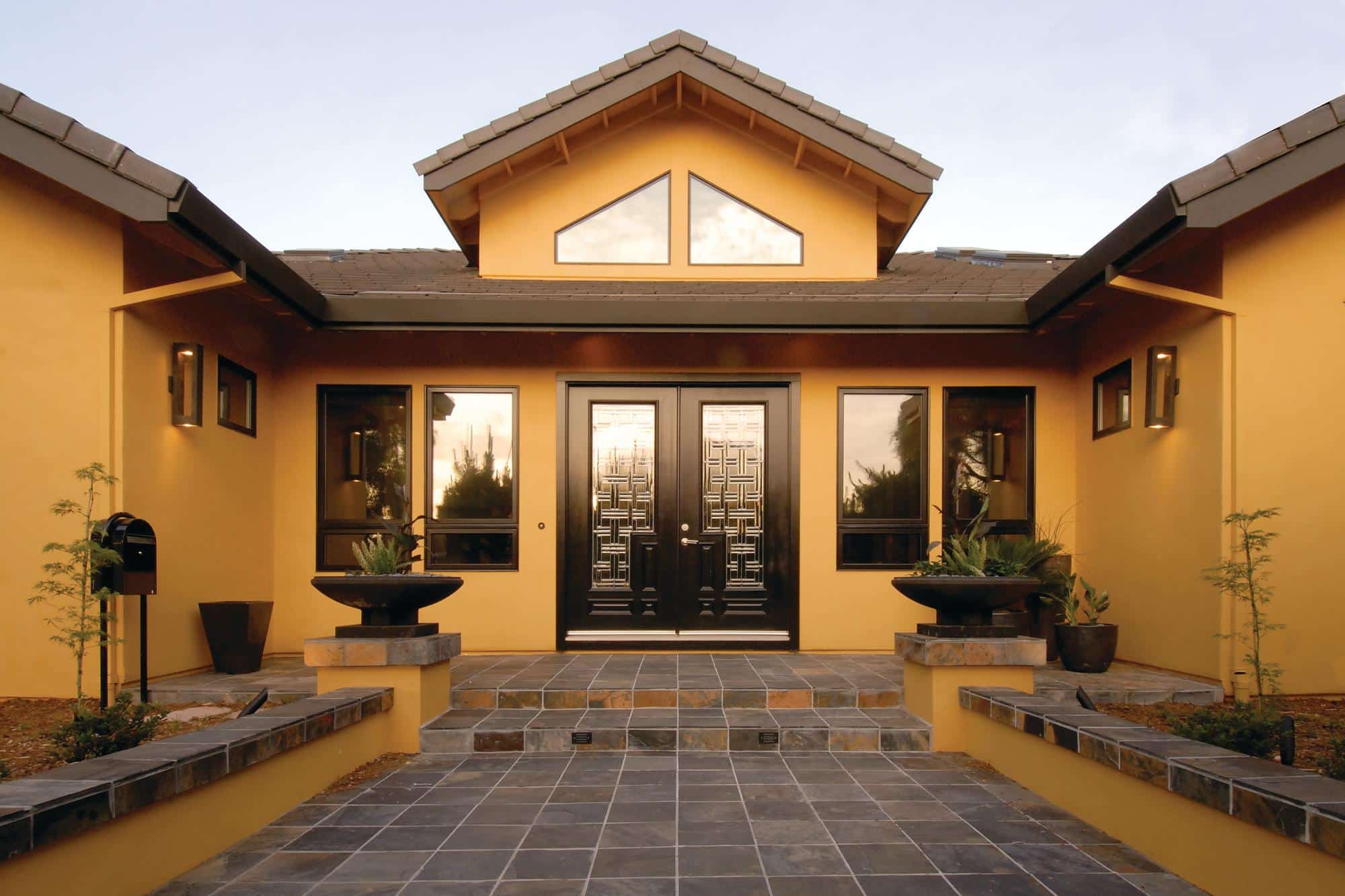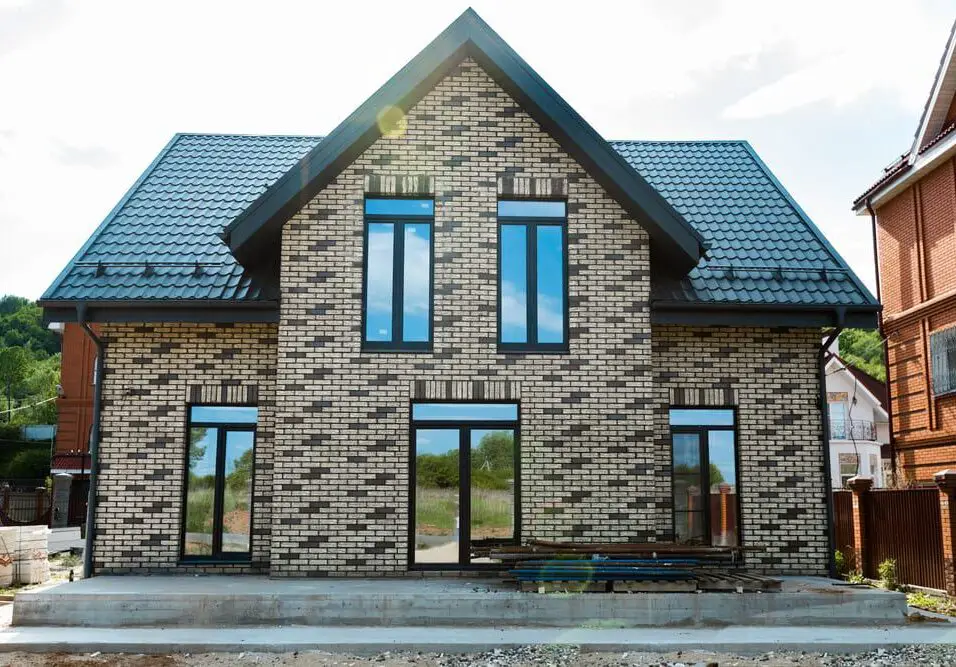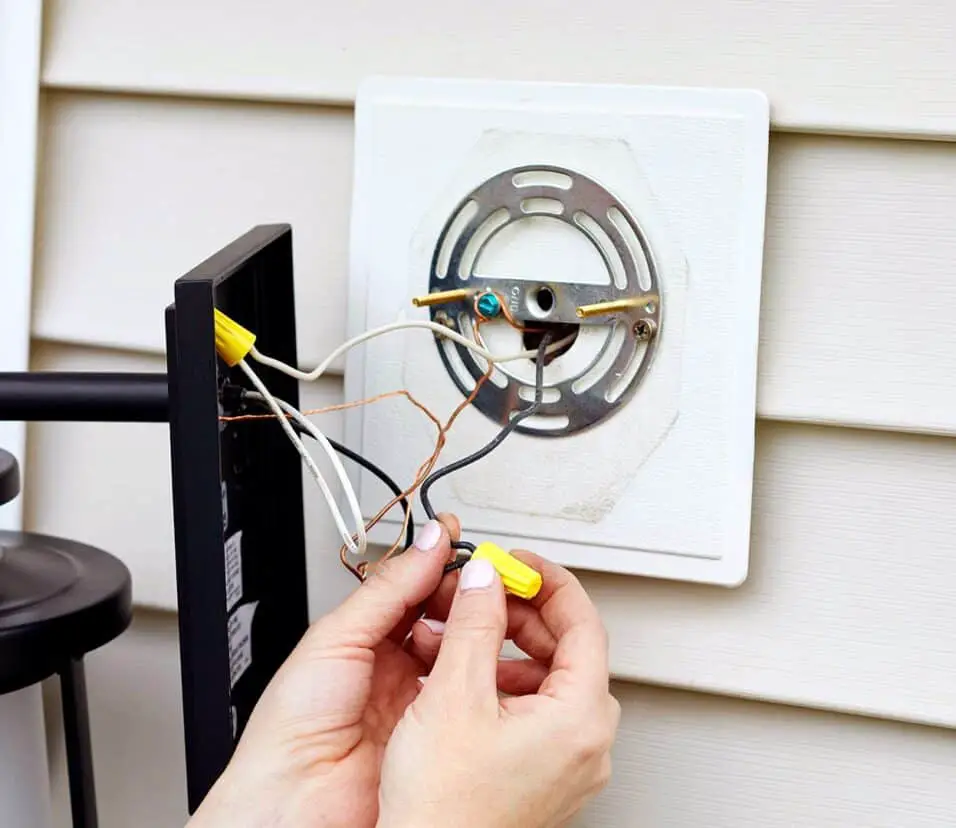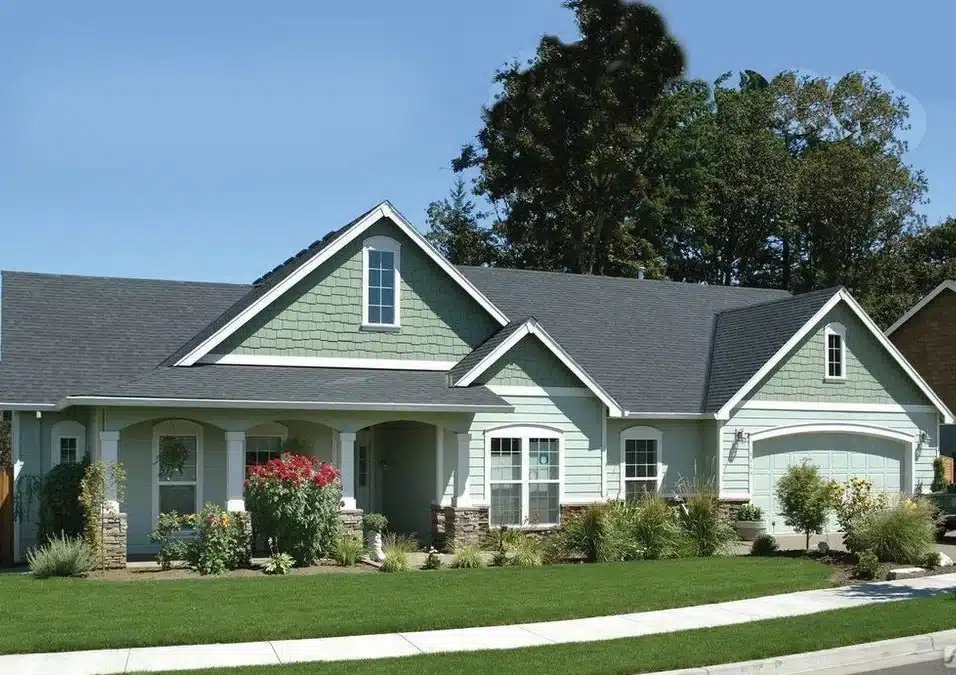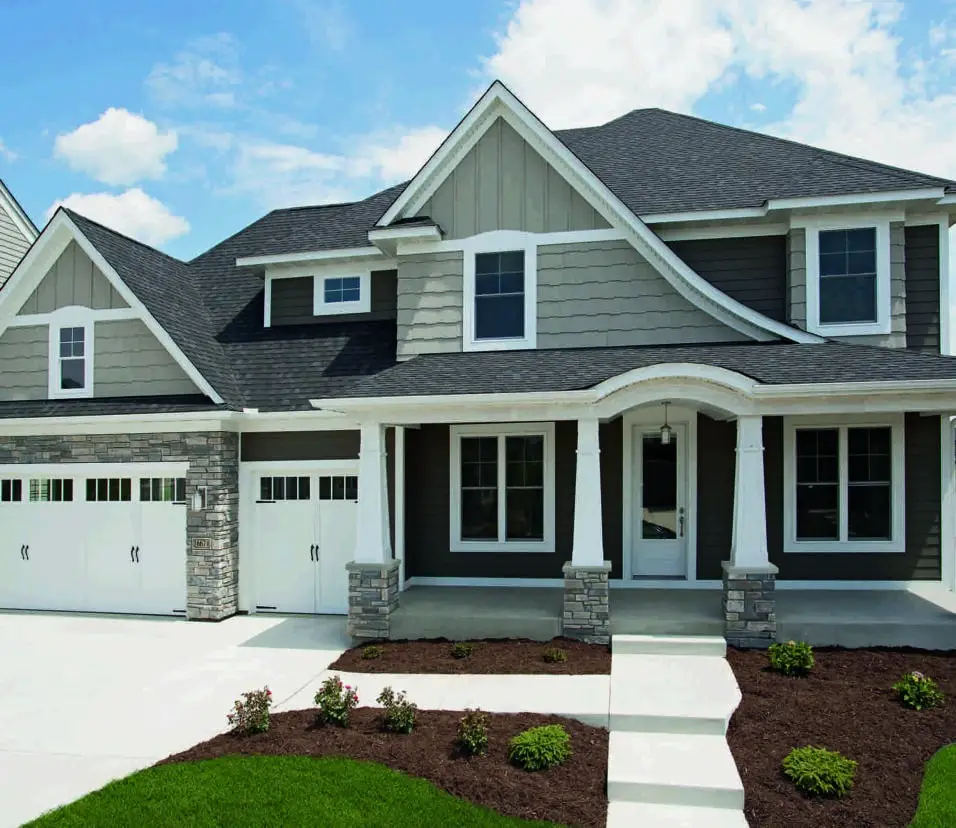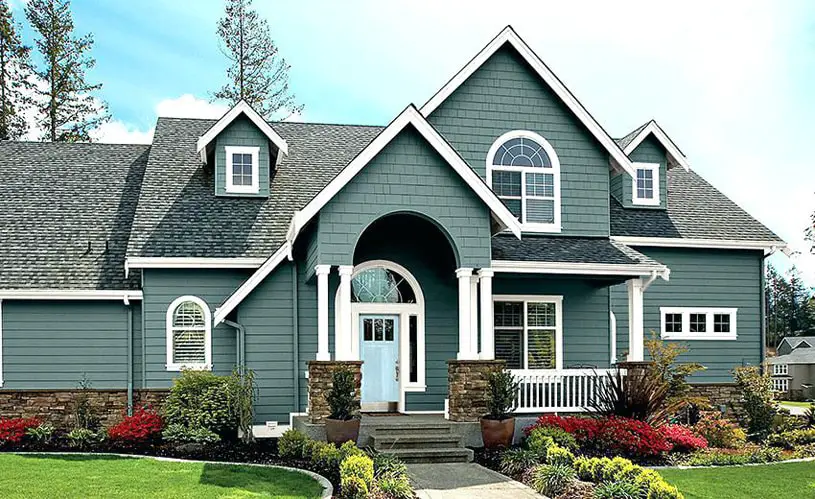What Exterior Paint Color Fades The Least
Introduction
What Exterior Paint Color Fades The Least: The perfect exterior paint color is a crucial decision for homeowners and architects alike. While aesthetics play a significant role in this choice, the long-term durability and fading resistance of the selected color are equally vital considerations. The impact of sunlight, weather, and other environmental factors can gradually erode the vibrancy of exterior paint, leading to a worn and lackluster appearance over time. As such, the search for an exterior paint color that fades the least has become a focal point in architectural and design discussions.
We delve into the world of exterior paint colors, investigating which hues have demonstrated superior resistance to fading. While no color is completely impervious to fading, certain shades have proven to be more resilient than others due to their pigmentation, formulation, and the properties of the pigments used. Factors such as the light-reflective value (LRV) of a color, the quality of pigments, and the type of paint can all contribute to its fading resistance.
This study not only caters to the aesthetic preferences of homeowners and designers but also emphasizes the practicality and investment value of selecting an exterior wall paint color that remains true and vibrant for an extended period. The article will analyze different color families, paint formulations, and technological advancements in paint production that contribute to enhanced color longevity. By understanding the science and art behind paint color fading, homeowners and professionals can make informed decisions, ensuring their buildings stand not only as architectural marvels but also as testaments to the endurance of carefully chosen exterior paint. So, join us in this journey as we uncover the hues that defy the passage of time and retain their brilliance even in the face of nature’s elements.

What causes exterior paint to fade?
Direct sunlight, harsh weather and extreme temperatures all cause exterior paint to fade. Harmful UV rays strip the color from all items that are in direct contact with it including paint. East and west facing sides of your house get the most direct exposure to sunlight resulting in the most fading.
Exterior paint fading is a natural phenomenon influenced by a combination of environmental factors, pigmentation properties, and the quality of paint formulations. The primary cause of paint fading is prolonged exposure to ultraviolet (UV) radiation from the sun. UV rays break down the chemical bonds within the pigments and paint molecules, leading to color degradation and loss of vibrancy.
Another contributing factor is the impact of weather conditions. Rain, wind, temperature fluctuations, and humidity levels can all affect the integrity of the paint surface, causing it to deteriorate over time. Harsh weather conditions can also lead to the development of cracks and peeling, which further accelerates fading.
The quality of pigments used in the paint plays a crucial role. Inexpensive or low-quality pigments tend to be less stable and more susceptible to fading. Higher-quality pigments are designed to be more resistant to UV radiation and can maintain their color integrity for longer periods.
Additionally, the type of paint formulation and protective additives can influence fading. Paints formulated with UV-resistant components and protective coatings can provide enhanced longevity against fading.
Exterior paint fading is a complex interplay of UV radiation, weather exposure, pigment quality, and paint formulation. Understanding these factors can help homeowners, architects, and designers make informed choices to ensure the durability and vibrancy of exterior paint colors over time.
How do you keep exterior paint from fading?
Choose Lighter Paint Colors for Exterior Surfaces
Simply put, lighter colors don’t fade as much as darker colors because darker colors have more pigment and are more absorptive — light colors simply have less to lose, plus they reflect light back.
Preserving the vibrancy of exterior paint and preventing fading requires a combination of strategic choices and proactive maintenance.
Quality Paint and Pigments: Begin with high-quality paint containing UV-resistant pigments. Invest in paints with a higher Light Reflective Value (LRV) to minimize heat absorption and UV damage.
Color Choice: Opt for lighter shades or earth tones, as they tend to fade less than darker hues. They reflect more sunlight and absorb less heat.
Paint Formulation: Choose paints with advanced formulations that include UV blockers and protective additives to shield against sun exposure.
Surface Preparation: Properly prepare surfaces before painting, ensuring they are clean, dry, and free of any loose paint or debris. A well-prepped surface helps paint adhere better and resist fading.
Primer Application: Applying a primer before painting creates a strong bond between the surface and the paint, enhancing its longevity.
Regular Cleaning: Routinely clean painted surfaces to remove dirt, debris, and pollutants that can contribute to fading.
Maintenance: Inspect for signs of fading, cracking, or peeling. Address any issues promptly to prevent further damage.
Protective Coatings: Consider applying a clear protective topcoat to provide an additional barrier against UV rays and harsh weather.
Shade and Shelter: If feasible, provide shade to painted surfaces through trees, pergolas, or awnings. This reduces direct sunlight exposure.
Professional Application: Hiring experienced professionals ensures proper application techniques, which can impact paint durability.
In summary, a combination of informed color selection, high-quality paint, vigilant maintenance, and protective measures can significantly extend the life of exterior paint and thwart fading.
Does exterior paint change color over time?
Regardless of the quality of your exterior paint, the color will begin to fade over time. Homes painted with high-quality paint and proper painting techniques tend to fade more evenly. If not, the paint may fade in certain areas and not in others.
Yes, exterior paint can change color over time due to a variety of factors, primarily environmental and chemical influences. One of the main contributors to color change is exposure to sunlight. Ultraviolet (UV) rays from the sun can break down the chemical bonds within the pigments and dyes used in paint, causing the colors to fade or shift. Darker colors are particularly susceptible to this phenomenon as they absorb more heat and UV radiation.
Weather conditions also play a role in color changes. Rain, wind, temperature fluctuations, and humidity levels can lead to paint degradation, resulting in color alterations and a worn appearance. Airborne pollutants, such as dirt, dust, and pollutants, can also accumulate on painted surfaces, impacting color clarity.
Furthermore, the quality of paint and pigments used initially affects color stability. High-quality paints formulated with UV-resistant pigments tend to experience less color change over time compared to lower-quality options.
To minimize color change, it’s advisable to choose high-quality paints, lighter or more stable color options, and apply proper protective coatings. Regular maintenance, such as cleaning and touch-ups, can also help preserve the original color and extend the life of the paint.
How long does exterior paint last before fading?
On average, a home’s exterior should be repainted anywhere between five and 10 years, depending on the materials. Check out the guide below to find out if your home’s exterior needs attention.
The quality, color, climate, and exposure to sunlight and weather affect the lifespan of external paint before fading. Good exterior paints last 5–10 years before fading.
Due to UV absorption, darker colors fade faster than lighter ones. Strong and continuous sunshine may increase fading compared to gentler weather conditions.
Exterior paint lasts longer with proper upkeep. Regular cleaning, touch-ups, and topcoats can reduce fading. In harsher regions, check the paint for wear and fading and prepare for repainting as needed to maintain its beauty and protection.
While there is no set timescale for outdoor paint fading, using high-quality paint, choosing colors carefully, and maintaining your painted surfaces will help them last longer and look better.
How does ultraviolet (UV) radiation from the sun impact the longevity of exterior paint colors?
UV radiation from the sun affects exterior paint color lifespan and vibrancy. That UV rays cause chemical reactions in paint pigments and molecules that fade and degrade color.
UV radiation breaks chemical bonds in paint pigments and molecular structure because it is more energetic than visible light. The pigments lose their brilliance and hue as this process damages their molecular integrity. Darker and more intense hues absorb more UV energy, making them more susceptible to harm.
UV light can also oxidize paint, making it chalky and fading. UV-faded paint is drab, washed out, and lacks shine.
Paint makers use UV-resistant pigments and compounds to combat UV rays. These components absorb and spread UV radiation, protecting paint color. Applying protective topcoats and keeping painted surfaces clean can also reduce UV radiation’s detrimental effects on outdoor paint colors, extending their longevity and appearance.
Could you explain the role of pigmentation quality in determining the fading resistance of exterior paint?
Exterior paint fade resistance depends on pigmentation. Pigments give paint its color, and their properties affect how well it resists environmental influences, especially UV radiation.
High-quality pigments are designed to be lightfast and stable, so they can endure UV exposure without changing color. The paint’s color brilliance lasts longer since these pigments break down less chemically under sunlight.
Lower-quality pigments may fade easily. These pigments breakdown faster under UV light, changing the paint hue. Uneven particle sizes or characteristics in some pigments can cause uneven fading throughout the painted surface.
Paint manufacturers develop and use high-quality, fade-resistant pigments through research and development. These pigments are chosen for their UV, temperature, and other environmental resistance. Selecting outdoor paint with high pigmentation ensures that painted surfaces retain their original beauty and color stability for years to come.
What are some environmentally-friendly strategies to minimize exterior paint fading without compromising aesthetics?
Minimizing exterior paint fading while maintaining environmental responsibility involves a combination of strategic choices and conscious practices:
Color Selection: Opt for lighter or earth-toned colors, as they absorb less heat and UV radiation, resulting in slower fading rates.
Low-VOC Paints: Choose paints with low volatile organic compound (VOC) content. These eco-friendly options emit fewer harmful chemicals into the environment and tend to have formulations that resist fading.
UV-Resistant Pigments: Prioritize paints containing UV-resistant pigments. These specialized pigments are designed to withstand sun exposure, leading to longer-lasting color vibrancy.
High-Quality Formulations: Select high-quality paints with advanced formulations that incorporate protective additives. These paints tend to have better durability and fading resistance.
Cool Roof Coatings: Consider applying cool roof coatings that reflect more sunlight and absorb less heat. This can help regulate temperature and reduce color-fading effects.
Regular Maintenance: Cleaning painted surfaces and promptly addressing any issues like peeling or cracks can prevent premature fading and extend the life of the paint.
Protective Coatings: Apply clear protective topcoats formulated to shield against UV radiation and weather damage without compromising the paint’s aesthetic appeal.
Shade and Shelter: If possible, provide shade through architectural features or landscaping elements to shield painted surfaces from direct sunlight exposure.
Sustainable Paint Brands: Choose paints from brands that prioritize eco-friendly practices and sustainable sourcing of materials.
By combining these environmentally-conscious strategies, it’s possible to minimize exterior paint fading while upholding aesthetics and contributing to a more sustainable and resilient living environment.
Could you provide insights into the latest technological advancements or paint formulations that offer enhanced resistance against fading for exterior applications?
Recent advancements in paint technology have led to innovative formulations that provide superior resistance against fading in exterior applications. One such advancement involves the incorporation of nanotechnology into paint formulations. Nanoparticles can be engineered to reflect UV radiation more effectively, thus reducing its impact on pigments and extending color life.
Additionally, the development of “cool paint” formulations has gained prominence. These paints are designed to have higher solar reflectance, minimizing heat absorption and UV exposure. They maintain a stable surface temperature, reducing stress on the paint and enhancing its fading resistance.
Companies are also investing in bio-based and sustainable paint ingredients, which can contribute to longer-lasting paint colors. These formulations often exhibit enhanced durability against weathering and UV radiation due to their natural properties.
Advancements in microencapsulation technology offer another avenue. Active ingredients, such as UV absorbers, can be encapsulated and incorporated into paints. These capsules release the additives over time, providing continuous protection against fading.
Furthermore, smart coatings with self-cleaning properties are emerging. These coatings can repel dirt and pollutants, maintaining the paint’s appearance and reducing the need for frequent cleaning, which can contribute to fading.
Incorporating these technological breakthroughs into paint formulations offers homeowners and designers a range of options to choose from, enabling them to select paints that not only meet aesthetic preferences but also provide extended color longevity and enhanced resistance against fading.
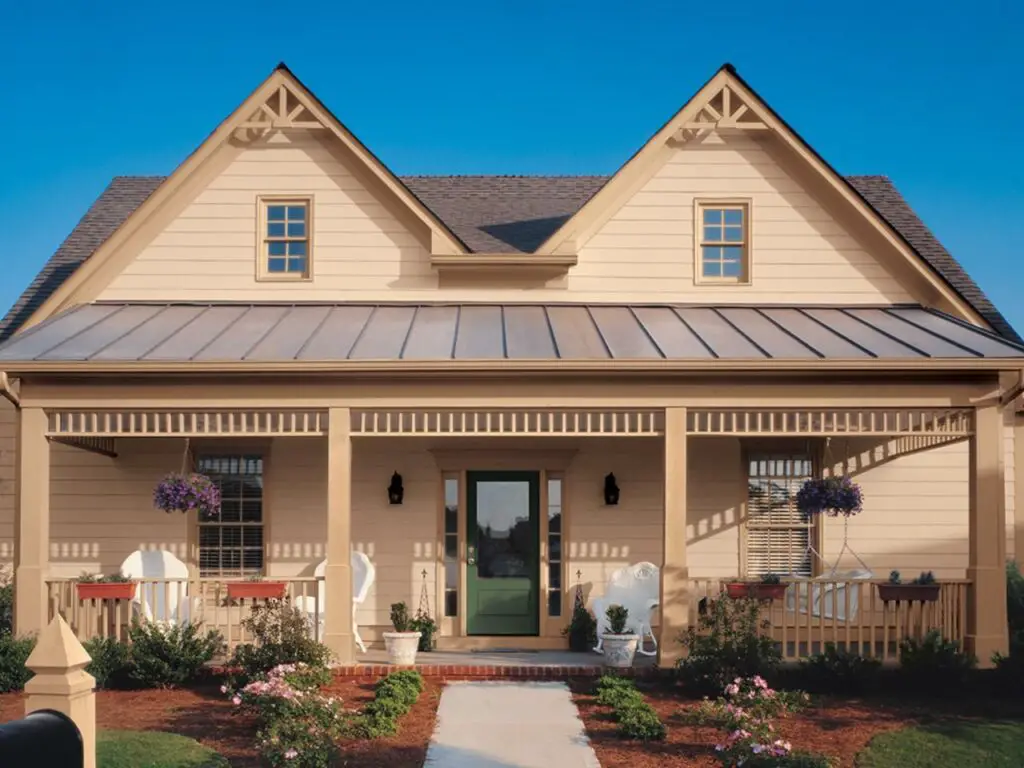
Conclusion
In the realm of exterior design, where aesthetics meet functionality, the choice of paint color transcends mere visual appeal. Through our investigation into the colors that fade the least, it becomes evident that this decision carries a profound impact on the longevity and allure of architectural structures. The interplay between pigments, formulations, and technology has unveiled a spectrum of hues that stand resilient against the relentless forces of nature.
As we conclude our journey, it’s clear that no paint color is entirely impervious to fading. However, by selecting colors with higher light-reflective values (LRV), utilizing advanced pigments, and opting for paints fortified with protective additives, we can significantly prolong the vibrancy of our exteriors. Homeowners, architects, and designers are now equipped with the knowledge to make informed choices that not only please the eye but also safeguard their investments for years to come.
Ultimately, the quest for the exterior paint color that fades the least is a pursuit that harmonizes the artistic with the practical. It’s a testament to human ingenuity and a dedication to creating spaces that endure, gracefully aging alongside the landscape they adorn. As architectural trends evolve and technology advances, this exploration will undoubtedly continue, leading to innovations that further enhance the palette of fade-resistant colors. In the tapestry of design, where time weaves its thread through every stroke of color, the hues that resist fading stand as a testament to the artistry of both nature and human creativity.



